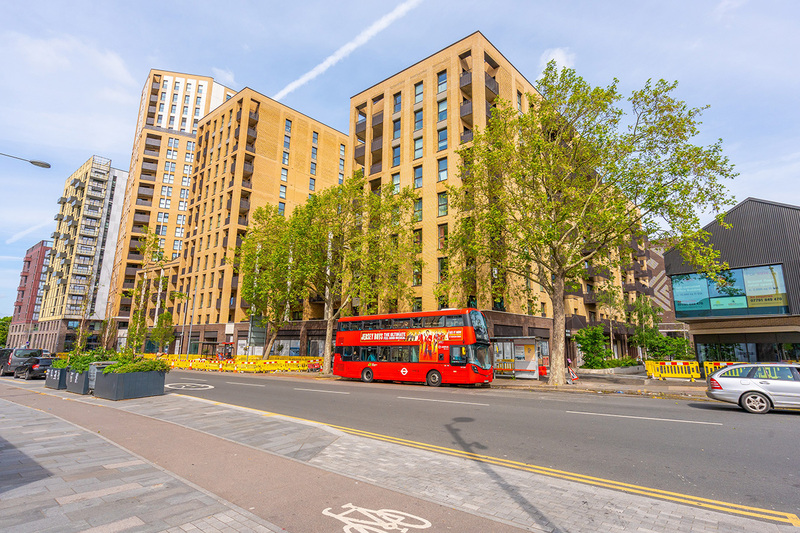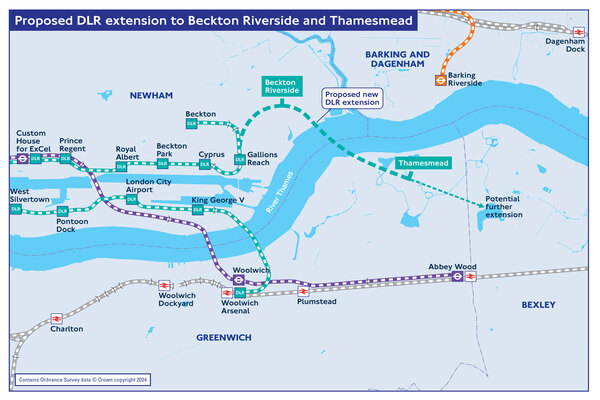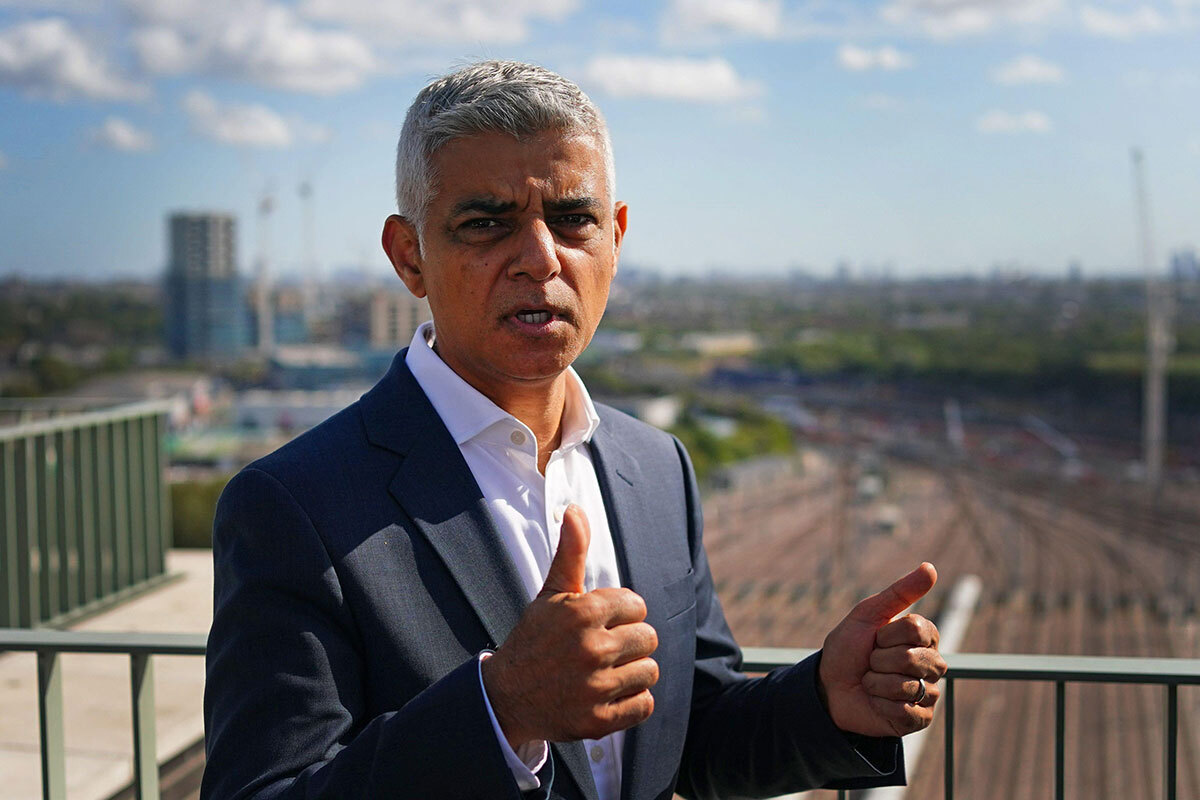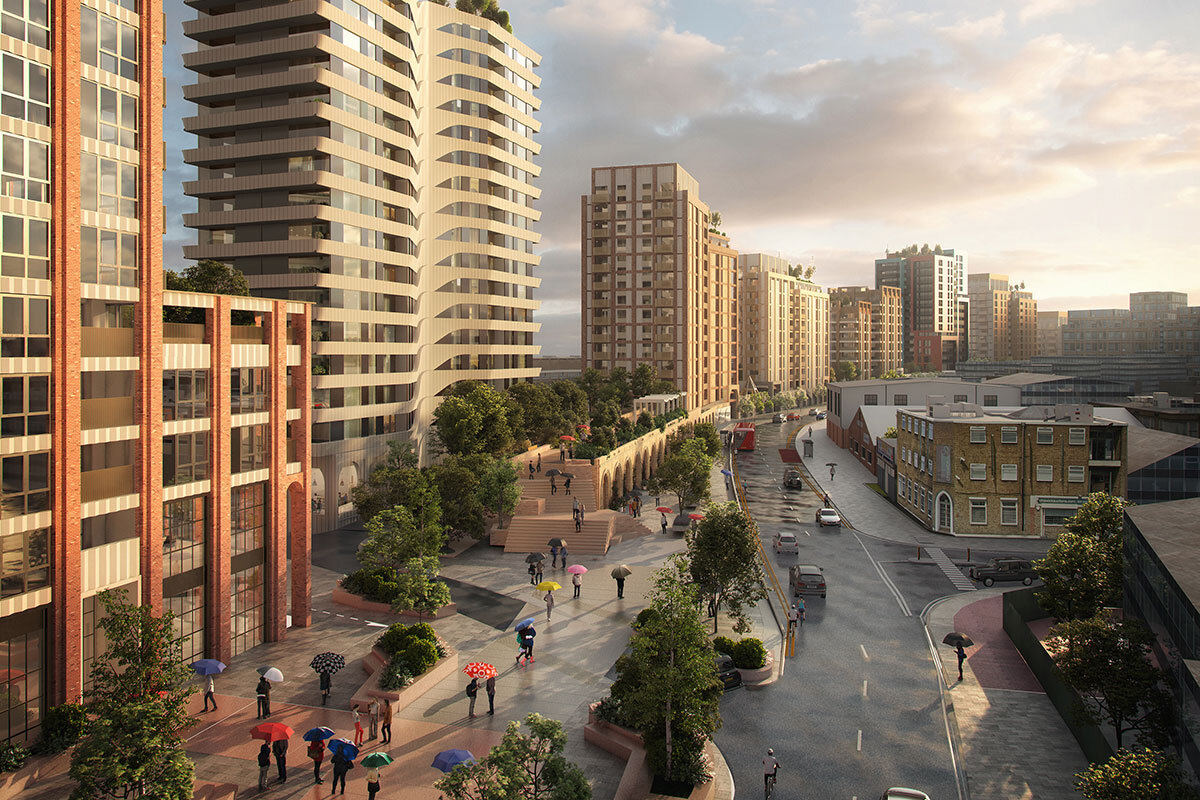The man building homes near the Tube
Graeme Craig now runs Transport for London’s commercial property company, Places for London, with an ambitious plan to build 20,000 homes around the capital’s stations. But, he tells Jess McCabe, he started out knowing almost nothing about property
If you hear the words, “Transport for London” (TfL), you will probably think: trains, tubes and buses, not property. But the body responsible for the capital’s transport network is a significant landowner, and it has significant ambitions to build 20,000 homes by 2031.
The man in charge? Graeme Craig, chief executive and director of TfL’s wholly owned property subsidiary Places for London.
Inside Housing sat down with Mr Craig to find out more about Places for London’s plans, and the man charged with executing them.
We meet at TfL’s office in Victoria Station House, right next to the Tube entrance. The ventilation system in the reception creates a loud whooshing that sounds just like the one you hear from the Tube platform, and the staff on reception wear TfL’s familiar blue uniforms.
Office decorations are similarly on brand: every room, corridor and meeting room is decorated with nostalgic London Underground posters.
Places for London has a property portfolio worth £2bn, including more than 1,000 spaces in and around TfL’s Tube stations all over the capital, business premises in railway arches and more. Its ambitions are big, too – most interesting to Inside Housing readers will be that 20,000 new homes target, of which 50% should be affordable under the mayor’s requirements for developing public sector land. But it also plans for 600,000 sq ft of workspaces, and property acquisitions in anticipation of the needs of the transport network.
But Mr Craig doesn’t come from a property background, and he says it is just “the latest and most enjoyable of a number of different things that I’ve done”. Mr Craig started out going to medical school. But: “By the end of it, I wanted nothing to do with medicine,” he says. Instead, he ended up in a series of private sector jobs, including what he refers to as “running call centres”, but in reality was heading up Royal Mail’s £2bn TV licensing operation.
Mr Craig was working for outsourcing contractor Capita in 2004. “My now wife and I decided that we were going to move from Bristol to London,” he says. He saw a job come up at TfL running the new Congestion Charge scheme, “which by that stage had just gone live”, he explains. “The transport elements were working. But there were some issues with the management of the call centre. And I thought, ‘I know how to run call centres.’ And I’m something of a nerd. So I was kind of interested in congestion charging, even in Bristol. And I thought I’ll apply for this job, see if I can get it and that will then be an interesting job in London.”
From there, Mr Craig has moved from role to role at TfL, working on some of the organisation’s most recognisable schemes: the first shared bikes (or, as Londoners ended up calling them, Boris Bikes); the first Low Emission Zone; transport preparations for the 2012 Olympics. Next came another project headed by Mr Craig to review and reorganise how TfL worked, bringing together the body’s hodge-podge of legal, HR and finance teams, and its property holdings.
“We struggled to find someone to head up the function because the job was seen as running TfL’s carparks,” Mr Craig says, with characteristic bluntness. “No one really wanted to do it. I certainly didn’t. But somewhat under sufferance, I said on a temporary part-time basis I would do the job, without realising then that that’d be the next 10 years of my life,” he says.
If Mr Craig undervalued the job at first, that is perhaps not surprising. “Back then we didn’t know what we owned. We didn’t know what to do with it. We were resolutely not a property company, we were a transport organisation,” he says. “For decades TfL had said, ‘If you got surplus land, you sell it to someone else.’ And having stepped into the job, [even though] I didn’t have a property background, it struck me that that was a really odd approach to take, before I knew the history of Metro-Land and everything else. And to a large extent, really, I’ve just been trying to relearn the lessons of the past.”
Metro-Land, if you have also missed this housing history lesson, was an initiative dating back to the 1880s, which saw homes built next to the Metropolitan Line, including flats above Baker Street and suburban homes.
“There are two things that matter in this job, two elements of legacy that I give a damn about. It’s what we can do in the streets of London and what we can do in the team”
But back then, Mr Craig didn’t know about this – or much about property at all. “I didn’t know about TfL’s land, I didn’t know about property. My experience was having bought and sold a house. But I knew how to ask questions. And I sat down with the team and said to them, ‘What’s the approach that we take? What do we do?’ They were generally patient with the questions I asked,” Mr Craig recalls.
Early on in the job, this came to a head. TfL was about to sell land connected to Earl’s Court Underground Station in west London. Mr Craig thought this was a mistake. “I thought, ‘This is 26 acres of west London. Why on Earth would we sell the freehold effectively of 26 acres of west London for what it’s worth now?’” Instead, he wanted TfL to participate in the likely uptick in value of that land.
TfL asked developer Capital & Counties (Capco) to bin the initial proposal of selling the land, and instead enter into a joint venture. “I can’t say that Capital were immediately enthused at the prospect of entering into a joint venture with TfL. But over the course of about 18 months, we managed to persuade them there was no other choice. We entered into a joint venture with them. And really, yes, that was driven by my desire that TfL should be involved in shaping the city. And TfL should be able to share in the proceeds,” Mr Craig says. TfL and Capco formed that joint venture in 2014, although executing the plans proved tricky and in 2019 Capco sold its interest in the joint venture to Delancey and APG. At the time of writing, the consultation was about to close on a new masterplan for the site, which projects 4,000 homes will be built, of which 35% will be affordable tenures.
To go back to 2014 and the early days of TfL’s change of direction on property, Mr Craig found that the property industry was receptive to the idea of TfL changing direction, and getting involved in developing projects in partnership, rather than just selling off land. “I got every encouragement in the world for TfL to think more creatively, more strategically about its land holdings,” he recalls.
For hundreds of years, much of London was owned by landed gentry, and their descendants still control great swathes of the capital – they are known as the ‘Great Estates’. Mr Craig started to think that TfL could function as a new great estate – but spread across the capital (most of TfL’s land is, as you might expect, concentrated around Tube stations).
But TfL as a Great Estate is rather a different prospect to, say, the Grosvenor Estate, owned by the Duke of Westminster, or the Portman Estate, which confers an estimated £2bn fortune on the 10th Viscount Portman.
When it comes to social housing, TfL’s ambitions are significant. Until Places for London was created in 2022, TfL had a target of building at least 10,000 homes – 50% of which would be affordable.
Then came the pandemic.
During COVID-19, the number of passengers on London’s Tubes, trains and buses plummeted. So did TfL’s income. There wasn’t enough money to run the trains, let alone invest in property. Solving the crisis needed a new funding settlement from central government, and TfL’s property holdings inevitably became one of the topics of discussion. The question was, as Mr Craig so clearly puts it: “Do we have a fire sale of assets at the worst possible time? Or do we say, ‘Actually, there’s a huge commercial appetite to invest?’”

The end result was the creation of a wholly owned subsidiary of TfL, Places for London (initially called TTL, and renamed late last year). This separated out Places for London’s dependence on asking TfL for funding – instead it runs off its property income, and pays 1% of its surplus back to TfL.
Another outcome? Doubling the target for the number of homes to be built, to 20,000.
When I ask Mr Craig how the 20,000 homes figure was arrived at, he recalls: “I said that, actually, if we’re not in competition with transport for funding, if we had commercial funding, then we’d be able to do more.
“People seemed quite excited at the notion that we could do more – at that stage, we had a 10,000-home target with the Greater London Authority [GLA]. So the question then became more what number we were going to come up with, if we can do more. And the number that emerged out of the ether was that we should be building 20,000 homes.”
As this is public land, Places for London is bound by the GLA’s target of 50% of development being affordable housing, although if you have a look at the correction on our previous interview with Mr Craig in April last year, you will see that might not mean 10,000 homes.
So far, it has completed 800 homes, with 3,450 under construction, largely through joint ventures with developers.
Apart from the doubling of the homes target, what difference has the creation of Places for London made? At least when it comes to the drivers for the organisation, it seems not much has changed.
“We never forget that these are TfL assets; that public assets are not ours to just run off with or play with. We’re here to serve TfL and we’re here to serve London. And as long as we remember that, then we won’t go far wrong,” Mr Craig says.
Places for London aims to build counter-cyclically, too. Asked how, Mr Craig says it is “not easy”. He adds: “You accept lower returns. Ultimately, that’s what it comes down to. It’s value optimisation rather than value maximisation.”
“To be able to get off the train and not to have to help someone up those stairs with a buggy – that will lift my heart”
When asked what he is most proud of in his career to date, Mr Craig doesn’t like the question. “I’m not a looking-back person,” he says. “There are two things that matter in this job, two elements of legacy that I give a damn about. It’s what we can do in the streets of London and what we can do in the team.” Part of that is setting up a team and company that functions into the future. Mr Craig also cites a desire for that team to be more diverse and better reflect Londoners. That is perhaps a shout-out to the rather white male world of property development. “I couldn’t do the job that I am doing unless I was motivated by what happens next, rather than what might have happened last week or last year,” he says.
Pressed a little more on any particular projects he is proud of, Mr Craig points to the plans to redevelop South Kensington Underground Station, for which Places for London and developer Native Land won a planning battle towards the end of 2023. As well as adding 50 homes, Mr Craig says the redevelopment will include step-free access to the station.
It is an update many parents with small children on their way to the Natural History Museum and the Science Museum near that station will definitely be grateful for. “To be able to get off the train and not to have to help someone up those stairs with a buggy – that will lift my heart,” Mr Craig says.
Which brings us nicely back to our setting perched above Victoria Station – and a reminder that all Places for London projects are transport projects, as well as property developments.
Places for London has also recently invested in Buck Street Market near Camden Town Underground Station – the organisation declines to state how much it spent. It has a commercial income from the shipping containers on the site, which have been turned into shops and restaurants, but it also bought the site with the thought in mind of a possible upgrade of the station.
“We were able to acquire it because it met our financial metrics, but we bought it in part to safeguard the site, should there be a future Camden Town upgrade. We’re one part of TfL that can plan long term,” Mr Craig says.
“Every project we’ve got has an operational interface,” Mr Craig adds. “We’re part of TfL. So if you’re delivering development at South Kensington Station, you look to take the opportunity to provide step-free access. We will be investing hundreds of millions of pounds in improving the transport system locally, as well. And that, frankly, dwarfs the dividend that we pay TfL.”
Recent longform articles by Jess McCabe
Inside Housing Repairs Tracker 2024
How much did English housing providers spend on repairs and maintenance in 2022-23? Jess McCabe looks through their financial records to find out
Who has built the most social rent in the past 10 years?
Jess McCabe delves into the archives of our Biggest Builders data to find out which housing associations have built the most social rent homes
Biggest Council House Builders 2024
For the second year running, Inside Housing names the 50 councils in Britain building the most homes. But is the rug about to be pulled on council development plans? Jess McCabe reports
Inside Housing Chief Executive Salary Survey 2024
Inside Housing’s annual survey reveals the salaries and other pay of the chief executives of more than 160 of the biggest housing associations in the UK, along with the current gender pay gap at the top of the sector. Jess McCabe reports
Sign up for our asset management newsletter
Already have an account? Click here to manage your newsletters













